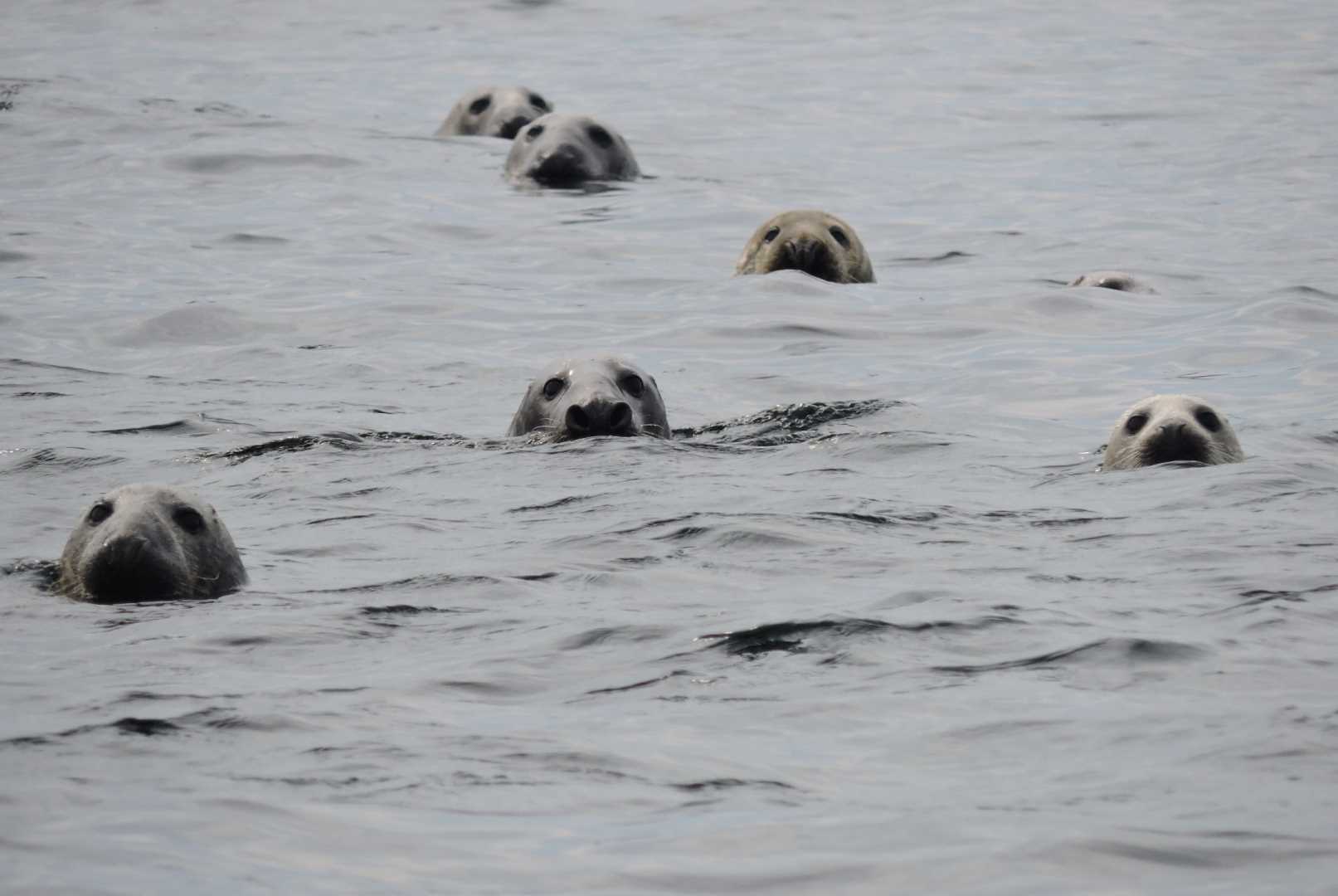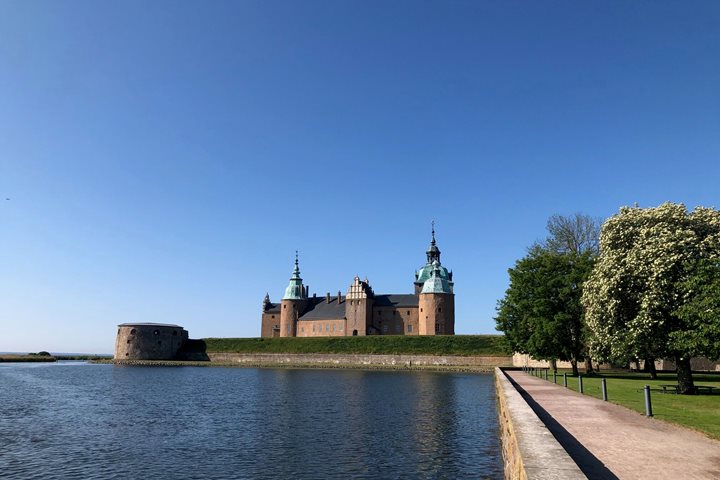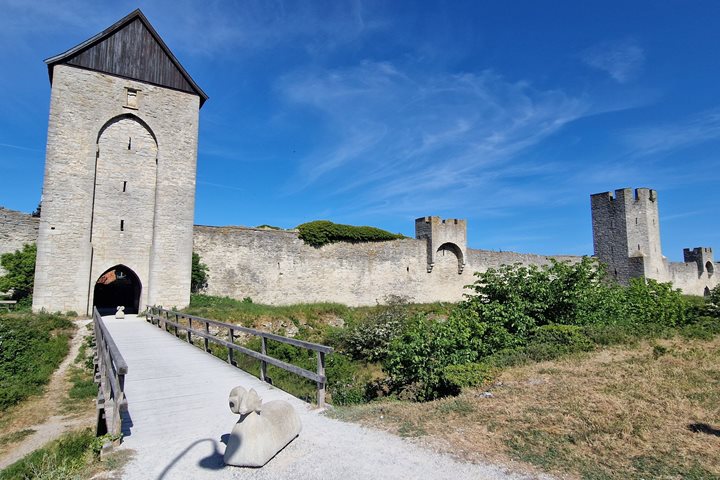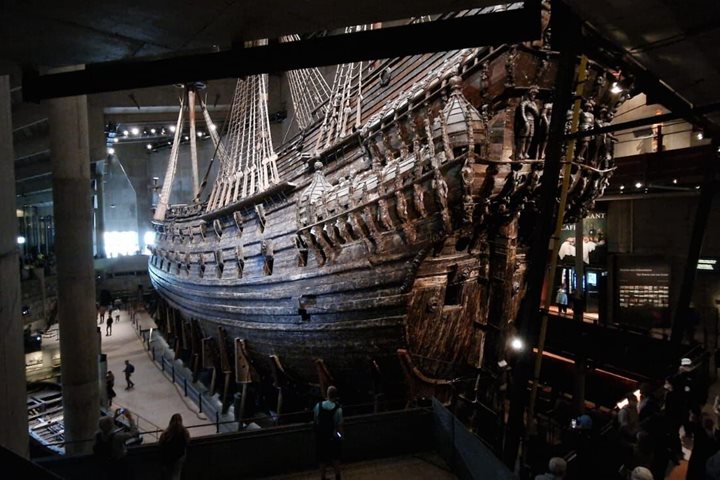Early this morning, we anchored off the tiny island of Christiansø, which is part of the Ertholmene Archipelago, a group of islands that today belong to Denmark. With Zodiacs, we landed on a small wharf near the colorful, picturesque, and quaint village that is inhabited by just 120 people. It is easy to understand why this has long been a favourite place for poets and writers. Christiansø and its sister island of Frederiksø are dominated by the impressive fortifications built here in 1684 by Christian V. In the 18th century, this site was used as a penal colony, but this dark episode is now evident only in the small museum on the island.
The two islands are joined by a small bridge, and we had time to explore both islands and enjoy the quiet solitude of the area as we observed lots of birds, including herring and common gulls, mute swans, red-breasted mergansers, pochard and mallard and eider ducks, robins, white wagtails, hooded crows, house martens, swallows, pipits and more! People were also impressed with the wildflowers and small gardens.
As we returned to the ship, everyone got a chance to cruise just offshore the neighbouring islet of Græsholm, which is a nature reserve for breeding sea birds (including the aforementioned gulls, as well as razorbills and guillemots) and grey seals. We hoped to see some of the seals, and we were not disappointed. There were dozens of animals both swimming and lounging about on the coastal rocks. It was fun to see many bobbing heads in the water facing our boats as they watched us watching them. In fact, many seals actually approached the Zodiacs to get better looks at us when we turned off the engines and just drifted.
During lunch, National Geographic Orion lifted anchor and sailed 11 nautical miles to the much larger island of Bornholm, which also belongs to Denmark. This seems odd, because it is just 23 miles (37 km) south of Sweden and about 100 miles (160 km) east of Copenhagen. The island has been prized as a strategic military and trading outpost since the early Middle-Ages, and has therefore been the focus of bloody territorial disputes between Danes, Swedes, Germans, and Russians.
This lush, green island is now home to about 45,000 people and has an economy very much dependent on fishing, herring-processing, agriculture, ceramics, tourism, and the production of commercial clothes-pressing machinery (yes, you read this correctly). We landed by Zodiacs in the small, protected harbor of Gudhjem, where we divided into groups in order to enjoy many aspects of the island. Some took a coach tour through the countryside to see the sites, including the 12th century round church of Olsker—one of Bjornholm’s four characteristic round churches, as well as the ruins of the medieval Hammershus Castle set along the edge of the island’s northern cliffs. It is reputed to be the largest castle in northern Europe.
A few of us even wanted to sample smoked mackerel with beer and schnapps—a typical Danish snack. Many of us wanted to experience Bornholm on foot and were able to hike on forest trails on the northern end of the island. This was really fun, and we were able to get right into the dense forest and see the incredible early spring blossoms of the wild cherry trees and hawthorn trees. Most other trees were either still bare or were just starting to leaf out. The wildflowers were abundant, but almost everyone seemed most excited about the tiny, aptly-named early purple orchid.
Once we were all back aboard, National Geographic Orion lifted anchor and began the overnight voyage to Copenhagen, where we planned to complete our epic voyage within the Baltic Sea. Over just two weeks, we have visited eight countries and ten different sites, and experienced an amazing amount of culture and history along the way … pretty darned impressive!







